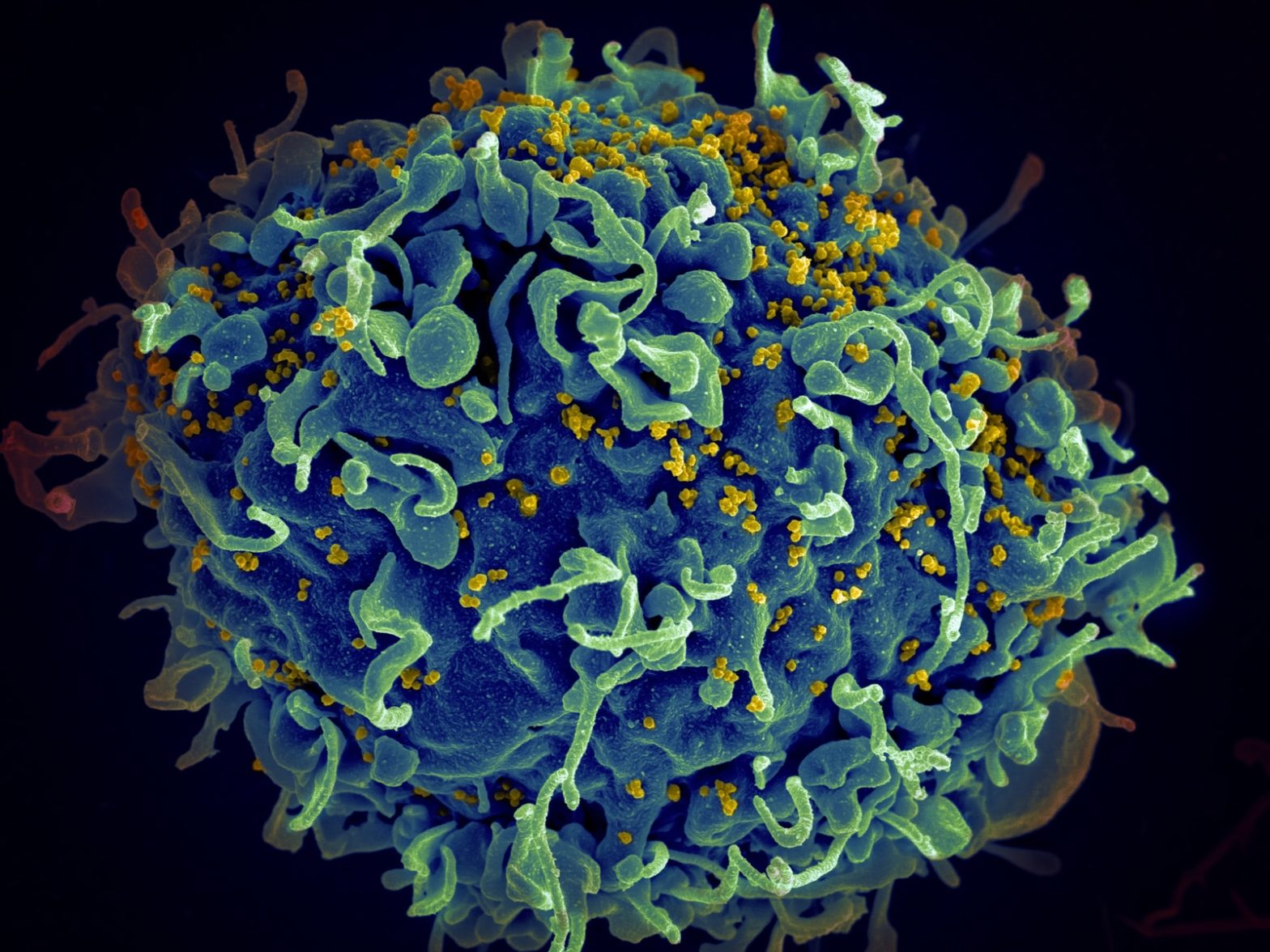Description
Lymph nodes play a central role in SIV persistence compared to gut (P-VISCONTI study)
C. Charre1,2, A. Mélard1, E. Gardiennet1, D. Desjardins3, C. Passaes4, V. Monceaux4, N. Dereuddre-Bosquet3, M. Muller-Trutwin4, C. Rouzioux5, R. Le Grand3, A. Saez-Cirion4, V. Avettand-Fenoel6,7,1
1Université Paris Cité, INSERM, U1016; CNRS, UMR8104, Paris, France, 2AP-HP, Hôpital Cochin, Paris, France, 3Université Paris-Saclay, CEA, INSERM, UMR1184, Immunology of Viral Auto-immune, Hematological and Bacterial diseases (IMVA-HB/ IDMIT Department), Fontenay-aux-Roses/Le Kremlin-Bicêtre, France, 4Institut Pasteur, Paris, France, 5Université Paris Cité, Paris, France, 6Université d’Orléans, Orléans, France, 7CHU d’Orléans, Orléans, France
Purpose: HIV/SIV reservoir cells are broadly distributed throughout the body and remain a major barrier to viral eradication. Among the key anatomical sites involved in viral persistence, the gut and lymph nodes (LN) are prominent, but their respective contributions remain incompletely defined.
Method: We performed an in-depth tissue analysis of reservoirs in a non-human primate model of SIV infection as part of the pVISCONTI study. Forty-eight macaques were analysed: 15 untreated, 11 ART-treated for two years and aviremic, 11 post-treatment controllers (PTCs) >6 months after ART interruption, and 11 viral rebounders, all sampled at necropsy (Passaes, 2024). Total SIV-DNA, intact proviruses and 2-LTR circles, and cell-associated unspliced RNA (caRNA) were quantified in 44 fluids/tissues, including PBMCs, primary lymphoid tissues, secondary lymphoid tissues, a continuous range of gut sites (from stomach to rectum) and non-lymphoid tissues. Comparisons between tissue types were conducted using Friedman and Wilcoxon tests.
Results: Median loads (IQR) by tissue group (LN, gut, non-lymphoid tissues) are presented in Table 1. When comparing tissue types in all macaques, total SIV-DNA (Fig. 1), intact DNA (Fig. 2), 2-LTR circles and caRNA levels were significantly higher in LN than in gut, and in gut than in non-lymphoid tissues (p<0.0001 except for 2-LTR between gut and non-lymphoid tissues; Friedman test, Table 2). The higher levels in LN compared to gut were confirmed for all reservoir markers within each specific group of macaques, including in PTCs who had low levels of infection, except in ART-treated animals for 2-LTR circles (Wilcoxon tests, Table 2).
| Table 1. Median and interquartile range (IQR) of total SIV-DNA, intact proviral DNA, 2-LTR circles, and unspliced cell-associated RNA levels (caSIV RNA), stratified by tissue type (lymph nodes [LN], gut, or non-lymphoid tissues) within each subgroup: never treated macaques, non-controllers after ART interruption (NCs), post-treatment controllers (PTCs) and ART-suppressed macaques (under ART). | ||||||||||||
|---|---|---|---|---|---|---|---|---|---|---|---|---|
| total SIV DNA (copies/million cells) | intact SIV DNA (copies/million cells) | caSIV RNA (copies/µg total RNA) | 2-LTR (copies/million cells) | |||||||||
| median (IQR) | LN | gut | non lymphoid tissues | LN | gut | non lymphoid tissues | LN | gut | non lymphoid tissues | LN | gut | non lymphoid tissues |
| never treated n = 15 | 1072 [613;1812] | 159 [40;267] | 17 [11;44] | 1377 [540;1581] | 73 [36;159] | 9 [6;53] | 62937 [32583;242551] | 7047 [2230;25028] | 607 [84;2460] | 238 [82;377] | 6 [5;23] | 7 [3;9] |
| NC n = 11 | 453 [217;1201] | 102 [52;143] | 17 [11;23] | 895 [418;1828] | 42 [21;56] | 14 [3;27] | 33099 [4531;168439] | 2478 [685;6716] | 187 [40;873] | 175 [88;295] | 4 [2;7] | 1 [1;5] |
| PTC n = 11 | 20 [16;32] | 12 [10;14] | 8 [8;9] | 43 [31;66] | 9 [5;9] | 8 [8;9] | 142 [40;532] | 15 [9;105] | 6 [6;6] | 9 [5;18] | 0 [0;2] | 0 [0;0] |
| under ART `n = 11 | 21 [14;34] | 14 [11;17] | 9 [8;9] | 22 [11;52] | 2 [2;4] | 3 [2;4] | 10 [9;11] | 9 [8;10] | 6 [5;7] | 10 [0;22] | 0 [0;1] | 0 [0;0] |
Total SIV-DNA was quantified by qPCR, intact proviruses and 2-LTR circles by Intact Proviral DNA Assay, and cell-associated unspliced RNA by RTqPCR. The mean value of each biomarker across same-type tissues was calculated per macaque and used for median computation. | ||||||||||||
Table 2. Comparison of reservoir biomarkers across tissue types. | ||||||
|---|---|---|---|---|---|---|
| total SIV DNA (copies/million cells) p value | intact SIV DNA (copies/million cells) p value | caSIV RNA (copies/µg total RNA) p value | 2-LTR (copies/million cells) p value | |||
| all macaques | LN vs gut vs non lymphoid tissues | <0.0001 (n=48) | <0.0001 (n=47) | <0.0001 (n=39) | <0.0001 (n=39) | Friedman test |
| LN vs gut | <0.0001 | <0.0001 | <0.0001 | 0.0001 | ||
| LN vs non lymphoid tissues | <0.0001 | <0.0001 | <0.0001 | <0.0001 | ||
| gut vs non lymphoid tissues | <0.0001 | 0.0055 | <0.0001 | 0.1627 | ||
| never treated | LN vs gut | <0.0001 (n=15) | 0.0195 (n=9) | <0.0001 (n=15) | 0.0156 (n=9) | Wilcoxon test |
| Non Controllers | 0.0010 (n=11) | 0.0010 (n=11) | 0.0020 (n=10) | 0.0010 (n=11) | ||
| PTC | 0.0010 (n=11) | 0.0039 (n=10) | 0.0010 (n=11) | 0.0098 (n=10) | ||
| under ART | 0.0107 (n=11) | 0.0039 (n=9) | 0.0137 (n=11) | 0.0625 (n=9) | ||
(i) Pairwise Friedman tests across all macaques comparing levels of total SIV-DNA, intact proviral DNA, 2-LTR circles, and unspliced cell-associated RNA between tissue types: lymph nodes (LN), gut and non-lymphoid tissues. (ii) Pairwise Wilcoxon tests within each subgroup – never treated macaques, non-controllers after ART interruption, post-treatment controllers (PTCs), and ART-suppressed macaques (under ART) – comparing the same biomarkers between LN and gut tissues. The mean value of each biomarker across same-type tissues was calculated per macaque and used for median computation. | ||||||
Conclusions: This study underscores the predominant role of LN in sustaining the SIV reservoir across various clinical contexts (untreated infection, long-term ART, post-treatment control, and viral rebound after ART interruption). These findings support the prioritization of LN as a target in future HIV cure strategies aiming to reduce or eliminate persistent reservoirs.





